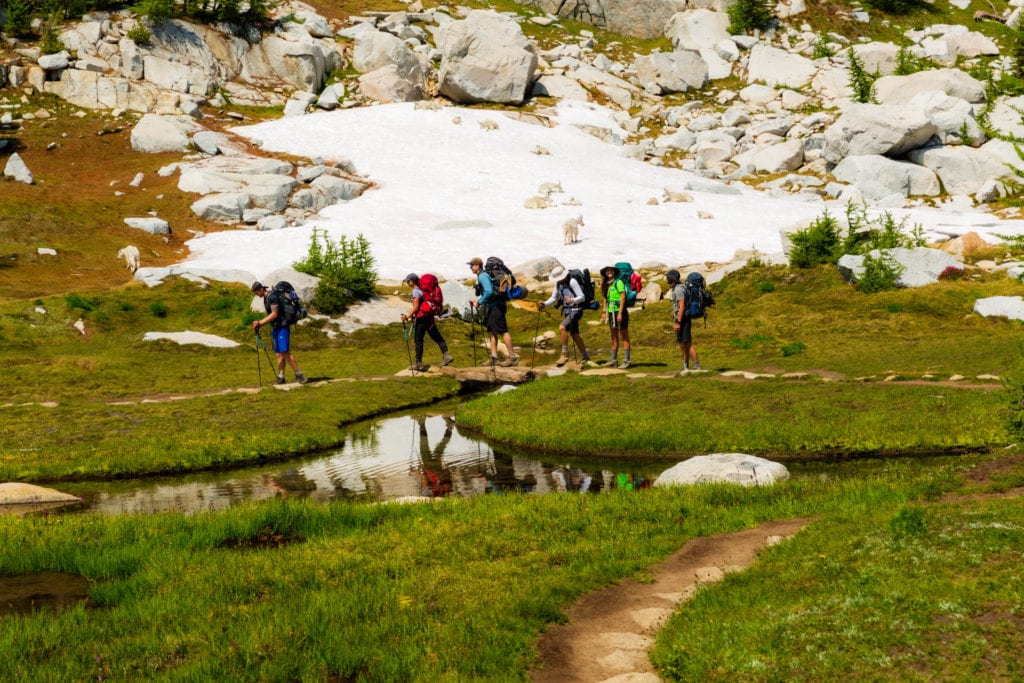Ultimate Guide to Hiking Attire: Choosing the Perfect Gear for Your Adventure
Proper hiking attire is crucial for a successful and enjoyable trip, regardless of your experience level. From base layers to footwear, this guide covers every aspect of hiking attire to ensure you’re well-prepared for outdoor adventures.
Proper clothing and gear are essential if you’re a seasoned hiker or new to hitting the trails.
Selecting the Best Hiking Attire for Your Next Adventure
Understanding the Importance of Proper Hiking Attire
Hiking attire is not just about looking the part; it serves a crucial purpose. Wear appropriate clothing to ensure comfort, protection, and enhanced mobility during your hikes. The right gear can also safeguard you against varying weather conditions and terrains, allowing you to focus on the beauty of nature.
The Core Elements of Hiking Attire: The Clothes You’ll Wear on the Trail
The core elements of hiking attire are essential building blocks for a comfortable and enjoyable hiking experience. Properly layering your clothing, choosing suitable materials, and considering weather conditions are crucial.
Here’s a detailed breakdown of the core elements of hiking attire:

Base Layers:
- Moisture-Wicking Fabrics: Base layers are the foundation of your hiking attire and should be made from moisture-wicking fabrics like merino wool or synthetic blends. These materials draw sweat away from your skin, keeping you dry and comfortable during strenuous hikes.
- Temperature Regulation: Base layers also regulate temperature, keeping you warm in cool and hot weather.
- Fit and Comfort: Ensure your base layers have a comfortable, close-to-skin fit without being too tight. Avoid cotton, which retains moisture and can lead to chafing and discomfort.
- Purpose: The base layer is your hiking attire’s first and most crucial layer. It sits next to your skin and manages moisture by wicking sweat away, keeping you dry and comfortable.
Love this article? Come follow me on Instagram.
Mid Layers:
- Insulation and Warmth: Mid layers provide insulation and help retain body heat during colder hikes. Fleece jackets and insulated vests are popular choices for mid-layers.
- Layering Versatility: Mid-layers can be added or removed depending on the weather and activity level, making them adaptable to changing conditions.
- Breathable Materials: Look for mid-layers made from breathable materials to prevent overheating during high-intensity activities.
- Purpose: The mid-layer provides insulation to retain body heat, keeping you warm in colder temperatures or during breaks.
Outer Layers/Shells:
- Weather Protection: Outer layers, such as waterproof and windproof jackets, shield you from rain, wind, and other elements. They are essential for hikes in variable weather conditions.
- Ventilation Features: Consider jackets with ventilation options, such as pit zips, to regulate body temperature and prevent overheating during intense hikes.
- Packability: Lightweight and packable outer layers are convenient to carry and easily stowed when unused.
- Purpose: The outer layer, often a waterproof and windproof jacket, protects you from rain, wind, and harsh weather conditions.

Layering Strategy:
- Versatility: Layering helps you transition smoothly from different hiking conditions, such as changing elevations or weather patterns.
- Regulating Body Temperature: Layering allows you to control your body temperature based on activity level. When hiking uphill or engaging in strenuous activities, you may need to remove a layer to avoid overheating. During breaks or on flat terrain, adding layers keeps you warm.
Layering is a valuable skill that ensures your hiking attire provides optimal performance, comfort, and versatility on the trails. By understanding the purpose of each layer, choosing appropriate materials, and adjusting layers based on weather, activity level, and terrain, you can confidently tackle any hiking condition.
Selecting Hiking Pants and Shorts
Choosing the appropriate hiking pants and shorts is crucial for a comfortable and enjoyable trek on the trails. These garments should offer durability, protection, and freedom of movement.
Here’s what to consider when selecting hiking pants and shorts for your hiking attire:

Fabric and Material:
- Quick-Drying and Moisture-Wicking: Look for pants and shorts made from quick-drying and moisture-wicking fabrics, such as nylon or polyester blends. These materials will keep sweat away from your skin and help you stay comfortable during strenuous hikes.
- Breathable: Hiking in warm weather can be sweaty, so opt for breathable fabrics that allow air circulation to prevent overheating.
- Durable: Choose pants and shorts made from durable materials that can withstand the rigors of the trail. Reinforced knees and seat areas add extra durability, especially for rugged terrain is the best hiking attire.
Pant Length and Convertible Options:
- Full-Length Hiking Pants: Full-length pants provide better protection against insects, scratches, and sunburn. They are an excellent choice for colder weather or hiking in brushy areas.
- Convertible Pants: Consider convertible pants that zip off into shorts if you prefer versatility. These are excellent for hikes in variable weather, allowing you to adapt to changing temperatures without changing your wardrobe.
- Roll-Up Pants: Some hiking pants come with roll-up cuffs and tabs, allowing you to secure them at a shorter length to transform them into capris.
Check out the REI August Sale for the best current deals
Fit and Mobility:
- Comfortable Fit: Hiking pants and shorts should have a comfortable fit without being too tight or restrictive. Ensure they have enough room to move freely, especially around the hips and thighs.
- Articulated Knees and Gusseted Crotch: Articulated knees and gusseted crotch designs enhance mobility and allow for natural movement, making them ideal for challenging terrains and steep ascents.

Pockets and Storage:
- Cargo Pockets: Pants with cargo pockets are handy for storing small essentials like trail maps, snacks, or pocket knives, keeping them easily accessible.
- Zippered Pockets: Look for pants with zippered pockets to secure valuable items like keys, IDs, or a phone during the hike.
Sun Protection:
- UPF Rating: For hiking in sunny conditions, consider pants or shorts with a UPF (Ultraviolet Protection Factor) rating to shield your skin from harmful UV rays.
Insect Protection:
- Insect-Repellent Treatment: Some hiking pants and shorts come with insect-repellent treatments to protect against bug bites, especially in areas with high insect activity.

Footwear for the Trails
When it comes to hiking, selecting the right footwear is paramount. The terrain, duration, and difficulty of your hike will determine the type of hiking shoes that best suit your needs.
Here are some key considerations and options to guide you in choosing the perfect hiking footwear:
Hiking Shoes vs. Hiking Boots:
- Hiking Shoes: Ideal for day hikes and light to moderate terrain, hiking shoes offer a balance between comfort and support. They are lightweight, flexible, and provide ample cushioning, making them suitable for most hiking conditions. Hiking shoes are popular for those who prefer a more agile feel on the trails. I personally like my Altra Lone Peak Trail Runners.
- Hiking Boots: Designed for more challenging terrains, backpacking trips, or multi-day hikes, hiking boots provide excellent ankle support and stability. They protect your feet from rocks, roots, and rough terrain, reducing the risk of sprains and injuries. Hiking boots are a solid choice for carrying heavy loads or traversing rugged landscapes. I personally like my LOWA Renegade boots (4 years of backpacking across two shoes), though been trying the new HOKA Anacapa, and they’re nice.
Consider the Terrain:
- Day Hiking Shoes: Low-cut hiking shoes are perfect for well-maintained trails, moderate terrain, and day hikes. They offer flexibility and breathability and are less constrictive than boots.
- Backpacking Boots: Opt for mid-cut or high-cut hiking boots if you plan on carrying a heavy backpack. These provide better ankle support and stability, reducing the risk of twisting your ankle on uneven or rocky terrain.
- Trail Runners: For those who prefer lightweight and nimble footwear, trail running shoes can be an excellent option for well-groomed trails and shorter hikes.

Fit and Comfort:
- Proper Sizing: Ensure your hiking shoes fit snugly but not too tight. There should be enough room to wiggle your toes, and your heels should remain firmly in place to prevent blisters and discomfort.
- Break-in Period: It’s essential to break in your hiking footwear before embarking on longer hikes. Wear them on shorter walks in the neighborhood or around the house to ensure they conform to the shape of your feet.
Waterproofing:
- Waterproof Hiking Shoes: Consider investing in waterproof hiking shoes or boots if you expect wet conditions. They keep your feet dry and comfortable during river crossings, rain, or wet trails. However, keep in mind that waterproof shoes may need to be more breathable.
- Non-Waterproof Hiking Shoes: Non-waterproof shoes are more breathable, making them suitable for dry and warm weather conditions. They are also lighter than waterproof options.
Traction and Outsole:
Look for hiking shoes with a rugged and grippy outsole. The pattern and material of the outsole should provide excellent traction on various surfaces, such as rocks, mud, and loose gravel.
Personal Preference:
Ultimately, your preferences and comfort level play a significant role in choosing the right hiking footwear.
Socks and Sock Liners
Often overlooked, choosing socks and sock liners is essential hiking attire for maintaining foot comfort, preventing blisters, and ensuring a pleasant hiking experience.
Here are some key considerations and options for selecting the perfect socks and sock liners for your hiking adventures:

Material Matters when it comes to Hiking Attire:
- Moisture-Wicking Fabrics: Look for socks made from moisture-wicking materials like merino wool, synthetic blends, or bamboo. These fabrics keep sweat away from your skin, reducing the risk of blisters and discomfort.
- Merino Wool: Merino wool socks are popular for their excellent moisture management, odor-resistance, and temperature regulation properties. They keep your feet warm in colder conditions and cool in warmer weather.
- Synthetic Blends: Synthetic socks, often made from polyester or nylon, are lightweight, quick-drying, and durable. They are an excellent choice for hiking attire and hot-weather hiking or those on a budget.
Sock Thickness:
- Lightweight Socks: Ideal for warm weather or shorter hikes, lightweight socks provide breathability and a snug fit.
- Midweight Socks: Suitable for most hiking conditions, midweight socks balance cushioning and breathability. They are versatile and can be used year-round.
- Heavyweight Socks: In colder weather or on more rugged trails, heavyweight socks provide extra cushioning and insulation for added comfort and protection.
Sock Height:
- Crew Socks: Crew socks cover the ankle, providing additional protection from debris and potential abrasions on the trail.
- Quarter-Length Socks: Quarter-length socks sit just above the shoe line, offering breathability and a lower profile for those who prefer less coverage.

Sock Liners:
- Anti-Blister Protection: Sock liners are thin, moisture-wicking socks worn under your primary hiking socks. They reduce friction between your feet and socks, minimizing the risk of blisters, especially during long hikes.
- Material and Fit: Choose sock liners from synthetic or silk materials for maximum moisture management and comfort. Ensure they fit snugly without any bunching or creasing.
Sock Fit:
- Proper Sizing: Like hiking shoes, socks should fit snugly without being too tight. Avoid extra material that may cause bunching or wrinkles, leading to blisters.
Multiple Pairs and Foot Care:
- Bring Extra Pairs: Always carry extra socks on longer hikes or multi-day trips. Changing into dry socks can help prevent foot issues and maintain comfort.
- Foot Care: Check your feet during breaks and at the end of the hike. Treat any hotspots or blisters promptly, and consider using foot powders to keep your feet dry.
Essential Accessories for Hiking Attire:
Wide-brimmed Hat: A wide-brimmed hat is a crucial accessory for hiking, providing shade and protection against the sun’s harmful UV rays. It helps prevent sunburn on your face, ears, and neck, reducing the risk of heatstroke and dehydration. Look for hats made from lightweight, breathable materials with an adjustable chin strap to keep them secure during windy conditions.
Sunscreen: Sunscreen is a must-have item to protect your skin from sunburn and long-term sun damage. Opt for a broad-spectrum sunscreen with a high SPF rating to shield against UVA and UVB rays. Apply generously to exposed areas, including your face, neck, arms, and legs, before setting out on the trail, and reapply as needed throughout the hike.
Sunglasses: Good-quality sunglasses with UV protection are essential for eye safety during hikes. They reduce glare, shield your eyes from harmful rays, and enhance visibility on bright days. Choose sunglasses with comfortable fit and durable frames to ensure they stay put during active movements.
Gloves: Depending on the weather and terrain, a reliable pair of gloves can provide warmth and protection for your hands. In colder conditions, insulated gloves keep your fingers from getting numb, while lightweight, breathable gloves shield against sunburn and abrasions on rocky trails.

Buff/Neck Gaiter: A multifunctional buff or neck gaiter offers versatility and protection. Wear it as a headband, neck warmer, face mask, or hat liner. Buffs can shield your face from wind, dust, and sunburn while providing extra warmth.
Insect Repellent: Keep pesky bugs at bay with a reliable insect repellent. Mosquitoes and ticks can carry diseases, making protecting yourself from their bites essential. Look for repellents containing DEET or picaridin for effective and long-lasting protection.
Headlamp/Flashlight: A headlamp or flashlight is indispensable when embarking on a hike that extends into the evening or nighttime. It allows you to navigate safely in low-light conditions and is crucial in emergencies. Opt for a lightweight, compact, and durable option with adjustable brightness settings.
First Aid Kit: A compact kit is essential for any hiking adventure. Include bandages, antiseptic wipes, blister pads, adhesive tape, pain relievers, and personal medications. Knowing basic first aid skills is equally important, ensuring you can handle minor injuries on the trail.
Trekking Poles: Trekking poles provide stability, reduce strain on your joints, and improve balance on uneven terrain. They are particularly beneficial during long hikes or when carrying a heavy backpack. Look for adjustable and collapsible poles that fit your height and can be stowed easily when not used.
Hydration System: Staying hydrated is crucial during hikes, so consider investing in a hydration system like a bladder or a water bottle with a built-in filter. These systems allow for easy access to water, encouraging you to drink regularly throughout your journey.
Seasonal Considerations for Hiking Attire
Adapting your hiking attire to the seasons is crucial for a safe and enjoyable trail experience. Whether hiking in the crisp air of fall, braving the chill of winter, enjoying the blooming beauty of spring, or tackling the heat of summer, suitable clothing and gear will ensure your comfort and protection.

Fall Hiking Attire:
- Layering is Key: Fall weather can be unpredictable, with chilly mornings and warmer afternoons. Dress in layers to easily adjust to temperature fluctuations. Start with a moisture-wicking base layer to keep sweat away, add a mid-layer for insulation, and top it off with a lightweight, waterproof jacket.
- Long Pants and Warm Socks: As temperatures drop, switch to long hiking pants to protect your legs from cold and potential scratches. Choose warm, moisture-wicking socks to keep your feet cozy and dry.
- Sturdy Footwear: The fall season often means muddy trails and wet leaves. Opt for waterproof or water-resistant hiking boots with good traction to navigate these conditions safely.
Winter Hiking Attire:
- Insulation and Thermal Layers: Winter hikes demand robust insulation. Wear a heavyweight base layer for warmth and moisture management. Add an insulated mid-layer, like a fleece or down jacket, and opt for a waterproof and windproof outer shell to protect against snow and icy winds.
- Cold-Weather Accessories: Remember essentials like a beanie or insulated hat, thermal gloves, microspikes, snowshoes, and a neck gaiter or scarf. Protecting your extremities is vital in cold conditions.
- Extra Socks and Foot Warmers: In frigid weather, pack extra socks and consider foot warmers to keep your feet comfortable and prevent frostbite.

Spring Hiking Attire:
- Lightweight and Breathable Fabrics: As spring temperatures fluctuate, opt for lightweight, moisture-wicking fabrics for your base and mid-layers. These materials will keep you comfortable while handling potential rain showers during mild to warm days.
- Rain Gear: Spring often brings rain, so pack a reliable waterproof jacket and pants to stay dry and comfortable on the trail.
- Gaiters: In wet and muddy conditions, gaiters can help keep debris out of your boots and protect your lower legs.

Summer Hiking Attire:
- Moisture-Wicking and Breathable Clothing: Summers can be hot and humid, making moisture-wicking and breathable fabrics essential. Choose light-colored clothing to reflect the sun and stay cooler.
- Sun Protection: Use a wide-brimmed hat, sunglasses, and apply sunscreen generously to shield yourself from harmful UV rays.
- Lightweight and Quick-Drying Shorts: Opt for lightweight hiking shorts for added comfort and breathability during summer hikes.
- Hydration and Lightweight Packs: Stay hydrated with a hydration bladder or water bottles, and use a lightweight backpack to carry your essentials comfortably.
- Insect Repellent: Insect activity is higher during summer, so protect yourself from bites with an effective insect repellent.
Always check the weather forecast before your hike and dress in layers to accommodate changing conditions. With the right seasonal hiking attire, you can fully immerse yourself in the wonders of nature and make the most of each unique hiking season.
FAQ about Hiking Attire
What clothes should you wear when hiking?
During all hiking seasons (especially in summer), you want to wear moisture-wicking clothes that absorb your sweat and provide a more enjoyable hiking experience. The best variations are wool, polyester, or some dry-fit material.
What pants to wear on hikes?
I love my Prana pants and find them perfect for hiking in almost all temperatures. They’re stretchy and lightweight, and I never feel constricted while adventuring backpacking or peak bagging.

Why wear hiking gaiters?
Hiking gaiters can keep rocks, dirt, and other nuisance out of your shoes, making for a cleaner and more comfortable hiking experience. This is only in a few people’s hiking attire, but I recommend it. Some are just around the ankle, and others are higher up for hiking in the snow.
Are hiking shoes waterproof?
Hiking shoes or boots are only waterproof if they say they are. Almost all hiking boots are, but hiking shoes are only sometimes. This is because they’re usually lighter and have mesh on the shoe vs. all leather.
What is the proper dress code for hiking?
This is what makes hiking so great. There really is no dress code or rules. Obviously, there are best practices on what to wear, but if you want to hike shirtless or in your sports bra, do it!
Wrapping up – Hiking Attire
With the knowledge gained from this comprehensive guide, you can make informed choices about your hiking attire. Remember that comfort, protection, and adaptability are key factors when selecting your gear.
Whether heading out on a short day hike or embarking on a multi-day trek, proper hiking attire will enhance your experience and allow you to embrace nature’s wonders confidently.
Happy trails!
Until next time adventurers, take care and be safe.
You can follow along the journey on TikTok, Facebook, and Instagram.

